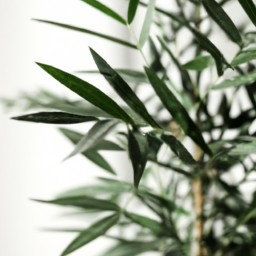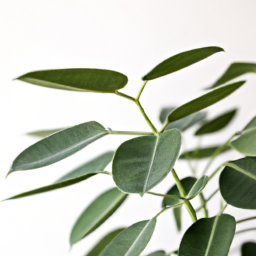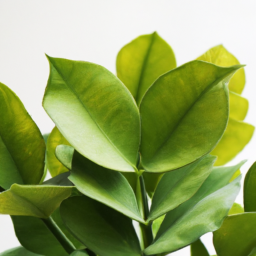
Are you looking to bring some greenery into your home but don’t have the space for a garden? Indoor trees might be the perfect solution for you! In this blog post, we will explore the different types of indoor trees that can thrive in the comfort of your home. Whether you’re a seasoned plant parent or just starting out, there’s a perfect indoor tree for every skill level and space constraint. Let’s dive in and discover the beauty and benefits of incorporating types of indoor trees into your living space.
Types of Indoor Trees: Popular Varieties for Home Decor
Choosing the Right Indoor Tree for Your Home
When it comes to adding some greenery to your indoor space, choosing the right indoor tree is essential. There are many different types of indoor trees to choose from, each with its own unique characteristics and care requirements. Before selecting an indoor tree for your home, consider the amount of natural light available in the space, as well as the humidity levels and temperature. Some indoor trees thrive in bright, indirect light, while others prefer low light conditions. It’s also important to consider the size of the tree and how much space you have available for it to grow.
One popular indoor tree variety is the Fiddle Leaf Fig, known for its large, glossy leaves and striking appearance. This tree thrives in bright, indirect light and requires regular watering to keep its soil moist. Another popular choice for indoor trees is the Rubber Plant, which has thick, dark green leaves and is known for its air-purifying qualities. This tree does well in low light conditions and only needs to be watered when the top inch of soil is dry.
If you’re looking for a low-maintenance indoor tree, consider the Snake Plant, also known as Mother-in-Law’s Tongue. This tree has tall, stiff leaves that require minimal watering and can thrive in low light conditions. The Money Tree is another popular choice for indoor trees, with its braided trunk and round, glossy leaves. This tree prefers bright, indirect light and should be watered regularly to keep its soil moist.
Caring for Your Indoor Tree
Once you’ve selected the perfect indoor tree for your home, it’s important to provide the proper care to help it thrive. Indoor trees require regular watering, but it’s essential not to overwater them, as this can lead to root rot. Check the soil moisture regularly and only water the tree when the top inch of soil is dry. Indoor trees also benefit from regular pruning to remove dead or damaged leaves and encourage new growth.
In addition to watering and pruning, indoor trees may also benefit from regular fertilization to provide them with essential nutrients. Choose a balanced, water-soluble fertilizer and apply it according to the manufacturer’s instructions. It’s also important to monitor the humidity levels in your home, as indoor trees thrive in humid environments. Consider using a humidifier or placing a tray of water near your indoor tree to help maintain the proper humidity levels.
Troubleshooting Common Indoor Tree Issues
Even with proper care, indoor trees can sometimes experience issues such as yellowing leaves, pests, or diseases. If you notice yellowing leaves on your indoor tree, it may be a sign of overwatering, underwatering, or nutrient deficiencies. Adjust your watering schedule and consider fertilizing your tree to help it recover. If you suspect pests or diseases on your indoor tree, inspect the leaves and stems for any signs of infestation. Treat the issue promptly with natural or chemical solutions to prevent further damage to your tree.
In conclusion, choosing the right indoor tree for your home can add beauty and greenery to your indoor space. Consider the amount of natural light available, humidity levels, and temperature when selecting an indoor tree, and provide the proper care to help it thrive. With the right care and attention, your indoor tree can become a stunning focal point in your home decor.

Choosing the Right Indoor Tree for Your Space: A Guide to Different Types
Introduction
Indoor trees can bring life and beauty to any space, whether it’s a home, office, or other indoor environment. However, choosing the right indoor tree for your space can be a daunting task with so many options available. In this guide, we will explore different types of indoor trees to help you make an informed decision that suits your space and lifestyle.
Popular Types of Indoor Trees
Ficus Trees
Ficus trees are popular indoor plants known for their glossy leaves and air-purifying qualities. They come in various sizes, from small bonsai ficus to towering fiddle leaf fig trees. Ficus trees thrive in bright, indirect light and prefer consistent watering. However, they are sensitive to changes in their environment, so it’s essential to place them in a stable location.
One popular variety of ficus tree is the weeping fig, which has drooping branches and a graceful appearance. Another common type is the rubber plant, known for its thick, leathery leaves. Ficus trees can add a touch of elegance to any indoor space and are relatively low maintenance once you find the right spot for them.
When caring for ficus trees, it’s crucial to monitor their water and light needs to prevent issues like leaf drop or pest infestations. Regular pruning can also help maintain their shape and promote healthy growth. Overall, ficus trees are versatile indoor plants that can thrive in various environments with proper care.
Palms
Palms are another popular choice for indoor trees due to their tropical appearance and low maintenance requirements. There are many types of palm trees suitable for indoor growing, such as the Areca palm, parlor palm, and majesty palm. Palms thrive in bright, indirect light and well-draining soil, making them ideal for indoor environments with ample natural light.
One key benefit of palm trees is their ability to purify the air and create a relaxing, tropical ambiance in any space. They require regular watering to keep their soil moist but not waterlogged. Palms are generally pest-resistant but may attract spider mites or mealybugs if not properly cared for.
To care for palm trees indoors, it’s essential to dust their leaves regularly and monitor their watering schedule. Overwatering can lead to root rot, while underwatering can cause the leaves to dry out and turn brown. With proper care, palm trees can thrive indoors and bring a touch of the tropics to your space.
Dracaena
Dracaena plants are versatile indoor trees known for their striking foliage and air-purifying properties. They come in various shapes and sizes, from compact corn plants to tall dragon trees. Dracaenas thrive in moderate to bright light and prefer well-draining soil to prevent root rot.
One popular variety of dracaena is the Janet Craig, with dark green, glossy leaves that add a touch of elegance to any indoor space. Another common type is the marginata, known for its colorful, variegated leaves. Dracaena plants are relatively low maintenance and can tolerate occasional neglect, making them ideal for busy individuals.
To care for dracaena plants, it’s essential to water them when the top inch of soil feels dry and provide them with occasional fertilization during the growing season. Pruning dead or yellowing leaves can help promote new growth and maintain their appearance. With proper care, dracaena plants can thrive indoors and enhance the beauty of your space.

Indoor Tree Care 101: How to Select and Maintain Various Types of Indoor Trees
Choosing the Right Indoor Tree for Your Space
When it comes to selecting an indoor tree for your space, there are a few key factors to consider. First and foremost, you’ll want to think about the amount of natural light that the tree will receive. Some indoor trees, like the Fiddle Leaf Fig, thrive in bright, indirect light, while others, such as the ZZ Plant, can tolerate lower light conditions.
Another important consideration is the size of the tree. Make sure to choose a tree that will fit comfortably in the space you have available. Some indoor trees, like the Rubber Plant, can grow quite large over time, so be sure to take this into account when making your selection.
Lastly, think about the level of care and maintenance that you are willing to commit to. Some indoor trees, like the Snake Plant, are incredibly low-maintenance and can thrive with minimal attention, while others, like the Maidenhair Fern, require more frequent watering and humidity.
Caring for Your Indoor Tree
Once you’ve selected the perfect indoor tree for your space, it’s important to provide it with the proper care and maintenance to ensure its health and longevity. Here are a few tips to help you care for your indoor tree:
1. Watering: The key to watering indoor trees is to strike a balance. Overwatering can lead to root rot, while underwatering can cause the tree to become dehydrated. Check the soil regularly and water when the top inch feels dry to the touch.
2. Light: As mentioned earlier, different indoor trees have different light requirements. Make sure to place your tree in a spot where it will receive the appropriate amount of light. If your tree starts to show signs of yellowing leaves or leggy growth, it may be a sign that it needs more light.
3. Humidity: Indoor trees, especially tropical varieties, thrive in humid environments. To increase humidity around your tree, you can mist the leaves regularly, place a humidifier nearby, or set the pot on a tray filled with pebbles and water.
4. Pruning: Regular pruning is essential for maintaining the shape and health of your indoor tree. Remove any dead or yellowing leaves, as well as any branches that are growing in a way that is undesirable.
5. Repotting: As your indoor tree grows, it may outgrow its current pot. Keep an eye on the roots and repot your tree into a larger container when necessary to prevent it from becoming root-bound.
Common Types of Indoor Trees
There are countless varieties of indoor trees to choose from, each with its own unique characteristics and care requirements. Here are a few of the most popular types of indoor trees:
1. Fiddle Leaf Fig: Known for its large, glossy leaves, the Fiddle Leaf Fig is a popular choice for indoor spaces. It thrives in bright, indirect light and requires regular watering.
2. Rubber Plant: With its thick, leathery leaves and upright growth habit, the Rubber Plant is a hardy and low-maintenance indoor tree. It can tolerate lower light conditions and infrequent watering.
3. Snake Plant: The Snake Plant, also known as Mother-in-Law’s Tongue, is a great choice for beginners. It is incredibly resilient and can thrive in low light and with infrequent watering.
4. ZZ Plant: The ZZ Plant is a tough and drought-tolerant indoor tree with shiny, waxy leaves. It can thrive in low light conditions and requires minimal care.
5. Maidenhair Fern: The Maidenhair Fern is a delicate and elegant indoor tree with feathery, light green leaves. It requires high humidity and regular watering to thrive.
In conclusion, caring for indoor trees can be a rewarding and fulfilling experience. By selecting the right tree for your space and providing it with the proper care and maintenance, you can enjoy the beauty and benefits of indoor trees for years to come. Remember to consider factors like light, size, and maintenance requirements when choosing an indoor tree, and don’t be afraid to experiment with different varieties to find the perfect fit for your space.
Highlights of this article
If you’re looking to bring a touch of nature into your home, indoor trees are a great way to do just that. There are many different types of indoor trees to choose from, each with its own unique characteristics and care requirements. One popular option is the fiddle leaf fig, known for its large, glossy leaves and striking appearance. This tree thrives in bright, indirect light and requires regular watering to keep its soil moist.
Another popular indoor tree is the rubber plant, which is known for its large, dark green leaves and easy care. This tree can tolerate low light conditions and only needs to be watered when the top inch of soil feels dry. If you’re looking for a smaller option, the money tree is a great choice. This tree has braided trunks and round, glossy leaves, making it a stylish addition to any room. It prefers bright, indirect light and should be watered when the top inch of soil feels dry. No matter which type of indoor tree you choose, adding a bit of greenery to your home can help improve air quality and create a relaxing atmosphere.
Here are the top questions that we were asked:
Q1: What are some popular types of indoor trees?
A1: Some popular types of indoor trees include Fiddle Leaf Fig, Rubber Plant, Snake Plant, and Money Tree. These trees are known for their ability to thrive indoors and add a touch of greenery to any space.
Q2: What are the benefits of having indoor trees?
A2: Indoor trees not only add beauty and aesthetic appeal to a space but also help improve air quality by removing toxins and releasing oxygen. They can also reduce stress, boost mood, and create a calming atmosphere.
Q3: How do I care for indoor trees?
A3: Caring for indoor trees involves providing them with adequate sunlight, water, and humidity. It’s important to monitor their growth, repot them when needed, and occasionally prune them to maintain their health and appearance.
Q4: Can indoor trees be harmful to pets?
A4: Some indoor trees can be toxic to pets if ingested. It’s important to research the specific tree species and ensure they are safe for your furry friends. Placing them out of reach or opting for pet-friendly plants is a good idea if you have pets at home.
Q5: Where can I buy indoor trees?
A5: Indoor trees can be purchased from local nurseries, garden centers, or online plant shops. It’s important to choose a reputable seller and consider factors such as plant size, health, and care instructions before making a purchase.
Dr. Olivia Green is a botanist with over two decades of experience in indoor plant cultivation. She holds a Ph.D. in Plant Biology and has dedicated her career to researching plant behavior in controlled environments. Dr. Green is passionate about helping plant enthusiasts master the art of indoor gardening through her extensive knowledge and practical insights.


